Viral Antigens(病毒抗原)
A viral Antigen is an antigen with multiple antigenicities that is protein in nature, strain-specific, and closely associated with the virus particle. A viral antigen is a protein encoded by the viral genome.A viral protein is an antigen specified by the viral genome that can be detected by a specific immunological response.
Viruses are infectious pathogens that cause serious diseases & major threats for global public health, such as influenza, hepatitis, & AIDS. Virus is a sub-micrometer particle that has DNA or RNA packed in a shell called capsid. Viral antigens protrude from the capsid and often fulfill important function in docking to the host cell, fusion, and injection of viral DNA/RNA. Antibody-based immune responses form a first layer of protection of the host from viral infection; however, in many cases a vigorous cellular immune response mediated by T-cells and NK-cells is required for effective viral clearance. When cellular immunity is unable to clear the virus, the infection can become chronic, and serum antibodies to the viral pathogen are used as first indicator for the diagnosis of the disease.
ELISAs provide a valuable tool in the detection and diagnosis of virus infection. The ability to produce recombinant viral proteins will ensure that future ELISAs are safe, specific and rapid. Even when a virus cannot be cultured, provided gene sequence is available, it is possible to rapidly respond to emerging viruses and new viral strains of existing pathogens.
Recombinant viral antigens contain part of viral sequence meaning that the recombinant antigen contains a region which can be recognized by different antibodies produced by different individuals. This reduces the risk of false negatives which can occur with synthetic peptides, which contain only a small portion of the entire protein. If an individual infected with a viral antigen makes antibodies to a part of the protein not included in the synthetic peptides, a false negative results.
Recombinant viral protein usually contains a fusion protein/partner which produces superior attachment to assay surfaces such as wells. For this reason, smaller amounts of recombinant protein will produce the same results as larger amounts of unfused protein. The choice of fusion partner prevents false positives, allowing superior adhesion without incorrect results.
Recombinant Viral proteins are expressed in bacteria, yeast, mammalian cells, and viruses. E. Coli cells were first to be used for this purpose but the expressed proteins were not glycosylated, which was a major drawback since many of the immunogenic proteins of viruses such as the envelope glycoproteins, were glycosylated. Nevertheless, in many instances, it was demonstrated that the non-glycosylated protein backbone was just as immunogenic. The obvious advantage of recombinant viral antigens is that they are available in unlimited quantities and the production and quality control processes is simple.
Advantages of defined using recombinant viral antigens:
1. Production and quality control is simple.
2. No nucleic acids or other viral or external proteins, therefore less toxic.
3. Safer in cases where viruses are oncogenic or establish a persistent infection.
4. Feasible even if virus cannot be cultivated
Disadvantages:
1. May be less immunogenic than conventional inactivated whole-virus vaccines.
2. Requires adjuvant .
3. Fails to elicit CMI.
Facts about Viral Antigens:
1. A Viral Protein Mimics its Way into cells.
2. Viral Protein Helps Infected T Cells Stick To Uninfected Cells.
3. The Viral Protein A238L Inhibits Cyclooxygenase-2 Expression through a Nuclear Factor of Activated T Cell-dependent Trans-activation Pathway.
4. Viral Protein is an effective preventative against ear infection.
5. HIV-1 Viral Protein R Induces Apoptosis via a Direct Effect on the Mitochondrial Permeability Transition Pore.
6. The Level of Viral Antigen Presented by Hepatocytes Influences CD8 T-Cell Function.
7. Antigen-presenting cells from calves persistently infected with bovine viral diarrhea virus, a member of the Flaviviridae, are not compromised in their ability to present viral antigen.
8. There is a difference in the distribution and spread of a viral antigen, development of lesions and correlation between presence of viral antigen and lesions.
9. The absence of viral antigens on the surface of equine herpesvirus-1-infected peripheral blood mononuclear cells is a strategy to avoid complement-mediated lysis.
10. Viral Protein Influences Key Cell-signaling Pathway.
11. A viral protein produced by cancer-causing virus influences a key signaling pathway in the immune cells that the virus infects. This stimulates the cells to divide, helping the virus spread through the body.
12. Protection by recombinant viral proteins against a respiratory virulent avian metapneumovirus has been achieved.
13. Viral O-acetylesterases are found in influenza C viruses and Corona-viruses. Viral O-acetylesterases remove cellular receptors from the surface of target cells which destroys the receptor. Recombinant viral O-acetylesterases derived from Sf9 insect cells as chimeric proteins fused to eGFP specifically hydrolyze 9-O-acetylated sialic acids, while that of sialodacryoadenitis virus, a rat coronavirus related to mouse hepatitis virus, is specific for 4-O-acetylated sialic acid. The recombinant esterases were shown to specifically de-O-acetylate sialic acids on glycoconjugates. The recombinant viral proteins can be used to unambiguously identify O-acetylated acids.
Products for Viral Antigens
- Borrelia(28)
- Chagas(3)
- Chikungunya(7)
- Chlamydia(10)
- Cytomegalo(8)
- Dengue(50)
- Ebola(4)
- EBV(13)
- Encephalitis(8)
- Feline Leukemia Virus(1)
- Hantavirus(1)
- HBsAg(7)
- Helicobacter Pylori(3)
- Hepatitis A(15)
- Hepatitis B(10)
- Hepatitis C(85)
- Hepatitis D(1)
- Hepatitis E(5)
- Herpes(11)
- HERV-K(1)
- HIV(151)
- HTLV(6)
- Influenza(72)
- Lassa(2)
- Malaria(71)
- Mumps(1)
- Mycoplasma(4)
- Norovirus(4)
- Papillomavirus(5)
- Parvovirus(3)
- Rubella(3)
- S. Typhi(5)
- SARS(85)
- Shiga Like Toxin(2)
- Toxoplasma(9)
- Treponema(16)
- Varicella(3)
- West Nile(2)
- Zika(13)
- Cat.No. 产品名称 Information
-
GP25531
Dengue Envelope-3 32kDa
Dengue Virus Subtype 3 Envelope 32kDa Recombinant

-
GP25535
Dengue Envelope-3 45kDa
Dengue Virus Subtype 3 Envelope 45kDa Recombinant

-
GP25543
Dengue Envelope-3, Insect
Dengue Virus Subtype 3 Recombinant, Insect Cells

-
GP25526
Dengue Envelope-4 22kDa
Dengue Virus Subtype-4 Envelope 22kDa Recombinant

-
GP25532
Dengue Envelope-4 32kDa
Dengue Virus Subtype 4 Envelope 32kDa Recombinant

-
GP25536
Dengue Envelope-4 45kDa
Dengue Virus Subtype 4 Envelope 45kDa Recombinant

-
GP25544
Dengue Envelope-4, Insect
Dengue Virus Subtype 4 Recombinant, Insect Cells

-
GP25560
Dengue Epitope 10
Dengue Multiple Epitopes 10 Recombinant

-
GP25561
Dengue Epitope 13
Dengue Multiple Epitopes 13 Recombinant

-
GP25546
Dengue NS1
Dengue Virus NS1 Recombinant

-
GP25547
Dengue NS1 c
Dengue Virus NS1c Recombinant

-
GP25548
Dengue NS1 n
Dengue Virus NS1n Recombinant

-
GP25552
Dengue NS1 ST1, Insect
Dengue Virus NS1 Subtype 1 Recombinant, Insect Cells

-
GP25553
Dengue NS1 ST2
Dengue Virus NS1 Subtype 2 Recombinant

-
GP25555
Dengue NS1 ST3, Insect
Dengue Virus NS1 Subtype 3 Recombinant, Insect Cells

-
GP25557
Dengue NS1 ST4, Insect
Dengue Virus NS1 Subtype 4 Recombinant, Insect Cells

-
GP25549
Dengue NS1, ST1
Dengue Virus NS1 Recombinant, Subtype-1

-
GP25554
Dengue NS1, ST3
Dengue Virus NS1 Recombinant, Subtype-3

-
GP25556
Dengue NS1, ST4
Dengue Virus NS1 Recombinant, Subtype-4

-
GP25550
Dengue p18
Dengue p18 Recombinant

-
GP25551
Dengue p42
Dengue p42 Recombinant

-
GP25527
Dengue Polyvalent
Polyvalent Dengue Antigen Recombinant

-
GP25528
Dengue Polyvalent ELISA
Polyvalent Dengue Antigen-I for ELISA Recombinant

-
GP25545
Dengue Premembrane
Dengue Virus Subtype 2, Premembrane Recombinant

-
GP25559
Dengue Rapid Test
Dengue Antigen for Rapid Test Recombinant

-
GP25558
Dengue-2 C-terminal
Dengue-2 Envelope Hydrophobic Domain Recombinant

-
GP25562
Dengue-HRP
Dengue Horseradish Peroxidase Recombinant

-
GC18869
Deoxyenterocin
5-Deoxyenterocin
A bacterial metabolite with diverse biological activities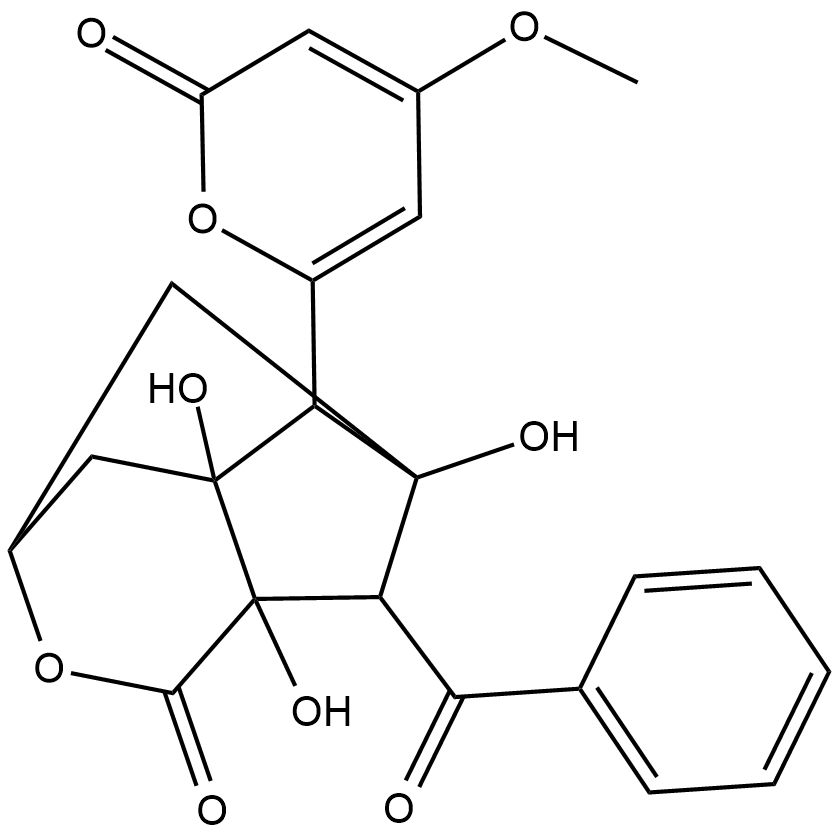
-
GC47193
Desethyl Hydroxychloroquine-d4
Desethylhydroxychloroquine-d4
An internal standard for the quantification of desethyl hydroxychloroquine
-
GC47195
Desethylchloroquine-d4
N-Desethylchloroquine-d4
An internal standard for the quantification of desethylchloroquine
-
GC10520
Dextran sulfate sodium salt (M.W 200000)
硫酸葡聚糖钠盐
A sulfated polysaccharide

-
GC43436
Diacetylcercosporin
A perylenequinone that has diverse biological activities

-
GC49153
Didemnin B
NSC 325319, NSC 333841
Didemnin B 是一种由海洋被囊类动物产生的环状肽肽,可特异性结合 EEF1A 的 GTP 结合构象,抑制其从核糖体 A 位点释放并防止随后的肽延伸。
-
GC74090
Dimethyl fumarate-d2
富马酸二甲酯-d2
Dimethyl fumarate-d2是氘标记的富马酸二甲酯。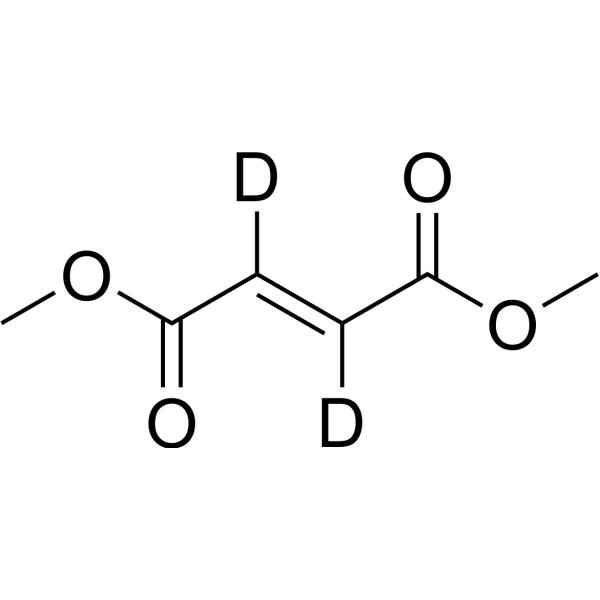
-
GC39734
Diphyllin
二叶草素
A lignan with diverse biological activities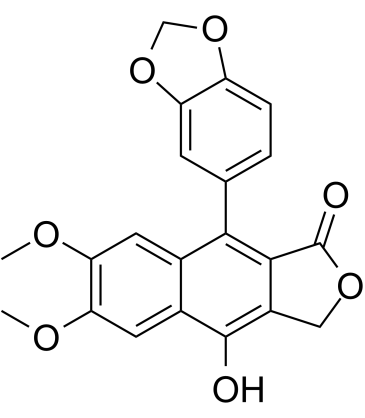
-
GC90598
DOG-IM4
一种可离子化的阳离子脂质

-
GC70661
Dolutegravir-d3
Dolutegravir-d3是氘标记的Dolutegravir。

-
GC45440
Doxycycline-d3 (hyclate)
一种用于量化多西环素的内部标准

-
GC39318
DSHS00884
SSYA10-001
DSHS00884 是有效的人乳头瘤病毒 E6 抑制剂,IC50 为 10 μM。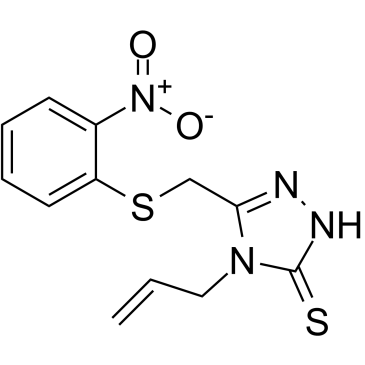
-
GC45442
DSPE-MPEG(2000) (sodium salt)
1,2-Distearoyl-rac-glycero-3-PE-N-Polyethyleneglycol-2000, 1,2-Distearoyl-rac-glycerol-3-Phosphatidylethanolamine-N-Polyethyleneglycol-2000, 1,2-Distearoyl-rac-glycerol-3-Phosphoethanolamine-N-Polyethyleneglycol-2000, 1,2-DSPE-MPEG(2000)
A PEGylated form of DSPE
-
GC91229
DXR Inhibitor 11a (free acid)
1-Deoxy-D-Xylulose-5-phosphate Reductoisomerase Inhibitor 11a
一种抑制P. falciparum DXR的药物。

-
GC91141
DXR Inhibitor 11a (sodium salt)
1-Deoxy-D-Xylulose-5-Phosphate Reductoisomerase Inhibitor 11a
一种抑制P. falciparum DXR的物质。

-
GC73003
EBNA1-IN-SC7
EBNA1-IN-SC7(化合物SC7)是一种选择性EBNA1 (Epstein-Barr nuclear antigen 1)抑制剂,干扰EBNA1- dna结合活性,IC50值为23 μM。
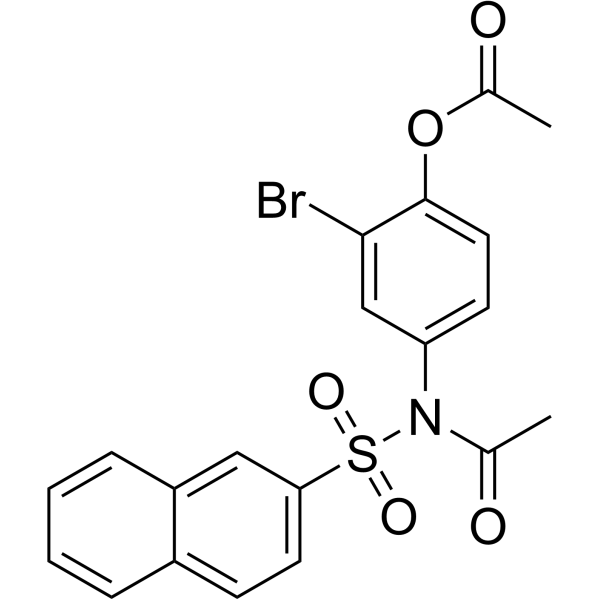
-
GP25450
EBNA1BP2 Human
EBNA1 Binding Protein 2 Human Recombinant

-
GP25467
Ebola Sudan Protein
Ebola Sudan Recombinant Protein

-
GP25465
Ebola Zaire GP
Ebola Zaire Glycoprotein Recombinant

-
GP25464
Ebola Zaire Protein
Ebola Zaire Recombinant Protein

-
GP25466
Ebola Zaire VP40
Ebola Zaire VP40 Recombinant

-
GP25444
EBV EA
Epstein-Barr virus (HHV-4) Early Antigen Recombinant

-
GP25443
EBV EBNA1
EB 病毒 (HHV-4) EBNA1 重组体





